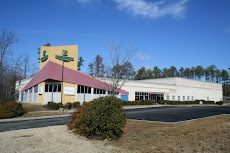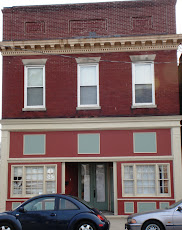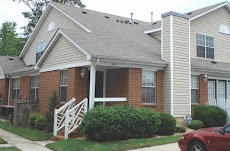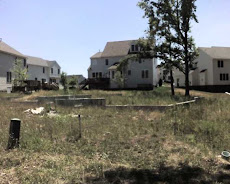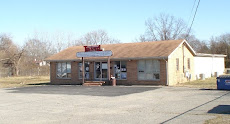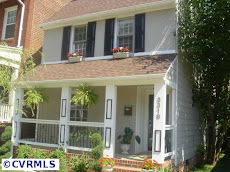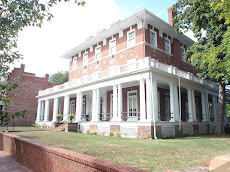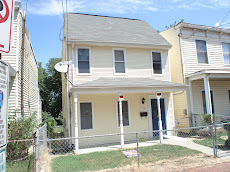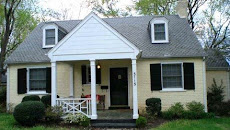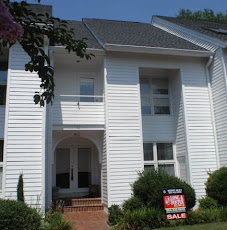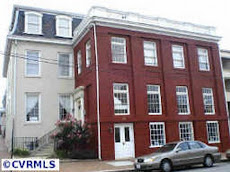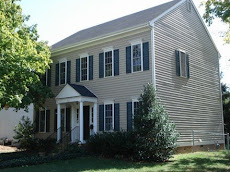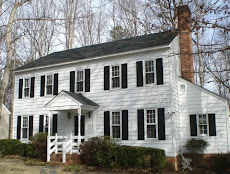Synopsis: Central Virginia Area Housing Market 2009 Annual and Fourth Quarter Report
Key Points
By:
Lisa A. Sturtevant, PhD
John McClain, AICP
George Mason University
Center for Regional Analysis
The U.S. Leading Economic Index turned upward in April 2009 and gained momentum through the year, rising 7.2% since March. GDP is projected by Global Insight to have increased by 5.1% in the 4th quarter of 2009. Initial claims for unemployment are now 33% less than their peak in April.
•
The unemployment rate in the Richmond Metropolitan Area peaked in June at 8.3% and the area’s unemployment rate has improved each month since then. As of November, the regional unemployment rate had fallen to 7.5%, almost two-and-a-half percentage points below the national rate.
•
Home sales nationally have improved significantly in the second half of the year. Existing home sales in November were up 44% since March, and were at the highest level since February 2007. New home sales have not increased as rapidly, but are showing improvement.
•
Given these economic measures, it is likely that Richmond’s economy will recover sooner that the national economy and this economic improvement will be the backdrop for the housing market as 2010 unfolds.
Sales Activity
•
In 2009, there were 11,162 existing homes sold in the Central Virginia region, which was virtually unchanged from 2008. In the 4th quarter of 2009, there were nearly 3,000 homes sold, an increase in sales of 29% over the 4th quarter of 2008.
o
In the Richmond Metro Area, there were 2,392 home sales, up 38% over the 4th quarter of 2008.
o
In the Tri Cities Area, there were 242 home sales in the 4th quarter of 2009, an increase of 17% over the 4th quarter of 2008.
•
In the 4th quarter of 2009, there were 2,466 pending sales in the CVR MLS, an increase of 17% over 4th quarter 2008 sales. Many of these pending sales will translate into closed sales in early 2010.
Home Prices
•
Existing home prices in the Central Virginia Region were down about 13% in 2009 compared with 2008. Prices were down in every quarter of 2009 and there is little evidence that they have reached a turnaround point.
•
In 2009, the strongest sales in the region were in the under $200,000 range. In the 4th quarter of 2009 more than half of all homes sold were priced below $200,000. By contrast, in the 4th quarter of 2008, only 40% of sales were in the under $200,000 range.
•
While there were fewer homes in the $200,000 – 299,999 price range sold in the 4th quarter of 2009 compared with 2008, pending sales were up in this price category – which may indicate a stabilization of prices in early 2010.
Outlook for 2010
•
Sales and pending sales are both higher at the end of 2009 compared with the end of 2008. In the first half of 2010, it is expected that sales activity will continue to increase.
•
The Federal homebuyer tax credit program has been expanded to include both first time and move up homebuyers. The program requires buyers to sign a contract by the end of April, with closing by the end of June, and many potential homebuyers may accelerate their decision to buy to meet this deadline.
•
As the number of potential buyers increases in early 2010, so will the confidence of potential sellers. As a result, it is expected that the number of listings will increase, giving buyers more options. While sales activity will likely increase, it is not certain that prices will rise in the first half of 2010.
•
Foreclosures remain a potential problem as the economic recovery unfolds. These homes will generally be lower priced and will continue to dampen prices in the overall market.
Friday, January 29, 2010
Wednesday, January 20, 2010
Who needs to borrow money?
Flush with money to lend
January 20, 2010 by Drew Jackson
A non-profit loan-facilitator is using stimulus money to provide loans for Richmond and Petersburg businesses.
REDC Community Capital Group has announced the start of a new campaign aimed at startups and businesses whose annual revenue is less than $6.5 million and who are struggling to obtain credit.
Businesses that are interested should contact REDC and schedule a meeting with a loan officer, as the process is similar to that at a regular bank.
Under the organization’s various loan programs eligible businesses can obtain financing for start-up or expansion, and the purchase or rehab of ‘owner operated’ commercial properties and machinery and equipment.
The new campaign will be aided by a $1 million grant given by the U.S. State Department of the Treasury’s CDFI fund, and made possible by appropriately awarded stimulus money. According to REDC’s Vice President of Public/Corporate Affairs, Vanessa Minter, the grant money will go towards the organization’s Business Enterprise Zone Loan (BEZL) program. The program has a maximum loan of $250,000 and goes towards helping start-ups or existing businesses finance the acquiring of new assets, or the updating of old ones.
“We want entrepreneurs or existing businesses to know that with this money, economically speaking, there are options to explore,” said Minter.
In an email President and CEO of the organization, Stephen Schley said that the typical business targeted by the BEZL program could vary, but would have limited capacity in meeting the down payment requirements for such loans through traditional lenders, which normally require higher down payments and offer lower loan to value than our program.
“Under our BEZL product, eligible businesses can put down as low as 10 percent, obtain a loan to value up to 90 percent and extend repayment over twenty years, with a fixed, non-callable interest rate for the life of the loan,” he said.
Previously the REDC could only offer their BEZL product to small businesses in the three enterprise zones in Richmond, but Schley said the grant allows them to extend the program to all eight enterprise zones in the Richmond/Petersburg MSA.
The grant will be used to bolster the $3.5 million already used for BEZL programs. Schley said the money to fund a marketing campaign designed to spread awareness of the company’s lending products, and without the grant such a campaign would not be possible.
There is no deadline for the use of the CDFI grant money.
In 14 years the REDC has provided loans for 713 business for a total of $30.2 million.
January 20, 2010 by Drew Jackson
A non-profit loan-facilitator is using stimulus money to provide loans for Richmond and Petersburg businesses.
REDC Community Capital Group has announced the start of a new campaign aimed at startups and businesses whose annual revenue is less than $6.5 million and who are struggling to obtain credit.
Businesses that are interested should contact REDC and schedule a meeting with a loan officer, as the process is similar to that at a regular bank.
Under the organization’s various loan programs eligible businesses can obtain financing for start-up or expansion, and the purchase or rehab of ‘owner operated’ commercial properties and machinery and equipment.
The new campaign will be aided by a $1 million grant given by the U.S. State Department of the Treasury’s CDFI fund, and made possible by appropriately awarded stimulus money. According to REDC’s Vice President of Public/Corporate Affairs, Vanessa Minter, the grant money will go towards the organization’s Business Enterprise Zone Loan (BEZL) program. The program has a maximum loan of $250,000 and goes towards helping start-ups or existing businesses finance the acquiring of new assets, or the updating of old ones.
“We want entrepreneurs or existing businesses to know that with this money, economically speaking, there are options to explore,” said Minter.
In an email President and CEO of the organization, Stephen Schley said that the typical business targeted by the BEZL program could vary, but would have limited capacity in meeting the down payment requirements for such loans through traditional lenders, which normally require higher down payments and offer lower loan to value than our program.
“Under our BEZL product, eligible businesses can put down as low as 10 percent, obtain a loan to value up to 90 percent and extend repayment over twenty years, with a fixed, non-callable interest rate for the life of the loan,” he said.
Previously the REDC could only offer their BEZL product to small businesses in the three enterprise zones in Richmond, but Schley said the grant allows them to extend the program to all eight enterprise zones in the Richmond/Petersburg MSA.
The grant will be used to bolster the $3.5 million already used for BEZL programs. Schley said the money to fund a marketing campaign designed to spread awareness of the company’s lending products, and without the grant such a campaign would not be possible.
There is no deadline for the use of the CDFI grant money.
In 14 years the REDC has provided loans for 713 business for a total of $30.2 million.
Tuesday, January 19, 2010
Just in case you missed Govenor McDonnell's speech last night
By Julian Walker
Philip Walzer
The Virginian-Pilot
© January 17, 2010
The plan
Gov. Bob McDonnell focused on job creation on the campaign trail and said he will make it a priority “on Day One.” Here are some of the steps he has outlined to create new jobs in the state.
■McDonnell hopes to double the Governor’s Opportunity Fund, a source of grants to entice businesses to move here.
■Make Virginia’s $1,000-a-job business tax credit trigger at 50 new jobs created, rather than the current minimum of 100 jobs.
■Less red tape and oversight for businesses, though few specifics yet.
■A campaign promise of particular interest to our region, no specifics are outlined yet.
■McDonnell wants to create a one-stop process for businesses to get all their needed permits within 48 hours.
■Lt. Gov. Bill Bolling has been designated job creation officer, and McDonnell has said his first executive order will be a job-creation task force
His slogan touted "Bob for jobs," and he promised to be Virginia's "jobs governor."
Gov. Bob McDonnell rode into office with jobs creation as his No. 1 theme. It wasn't just a campaign gimmick, he said last week.
"I know that's what I said I'd do and that's why people hired me," he said at a pre-inaugural stop in Norfolk. "So that's the thing I better get started on on Day One."
McDonnell, who was sworn in Saturday, proposed a melange of specific tools and broad themes to expand the state's job base.
Notwithstanding the state's $4.2 billion shortfall, he vowed to double the Governor's Opportunity Fund - a source of grants to entice businesses to move to the state - to $20 million a year. As of 2005, a similar fund in North Carolina was three times as large, McDonnell said. "No wonder we're getting beat," he said last week.
McDonnell, a Republican, also promised to expand Virginia's $1,000-a-job business tax credit. Now it kicks in when a company creates 100 jobs. He wants the trigger to be 50 new jobs.
Other pledges include reduced regulation for businesses, increased grants for tourism, and a one-stop process for businesses to get all needed permits within 48 hours.
He also spread the responsibility for building jobs. McDonnell designated Lt. Gov. Bill Bolling the state's job creation officer and said his first executive order would be to appoint a job-creation task force.
Virginia already is seen as a business-friendly state, partly because of strong right-to-work laws and relatively light regulation. Last year it was ranked the best state for business by Forbes.com and CNBC. That's why McDonnell needs to keep pushing for jobs, says Thomas Farrell II, chairman and CEO of Dominion Resources Inc.
"We have a very well-regarded state in the business community," Farrell said. "But you can't stand still on that, because other states are after that."
Many business advocates are encouraged by McDonnell's thrust. "I'm very pleased to see this emphasis on job creation and economic development," said Clayton Roberts, president of Virginia Free, a nonpartisan business coalition based in Richmond. "I think that, given the budget constraints, this may be one area where he can really seek to accomplish meaningful results."
Some academics and economists, though, question whether pumping up the Opportunity Fund - or anything a governor does - will make much difference.
"A lot of companies that you offer this to and take it will relocate to your state anyway," said Tim Bartik, senior economist for the W.E. Upjohn Institute for Employment Research in Kalamazoo, Mich. "People are making decisions that don't have much to do with state policy."
Others say providing strong transportation and education systems - Virginia has won plaudits for the latter, barbs for the former - is equally important in influencing companies.
McDonnell hasn't specified a target for new jobs. Bolling said success would be reflected, in part, by the state's employment rate in four years. Virginia's jobless rate is 6.4 percent, compared with 10 percent nationally.
"We understand that the economic recovery is going to be driven primarily at the national level," Bolling said. "There's not a lot we can do in Virginia to drive that. What we can do is position Virginia now to take advantage of that future economic recovery once it starts to happen."
Development officials and economists tend to take opposite sides on the value of incentive grants.
"In these economic times, incentives are very, very important for businesses," said Steven Wright, Chesapeake's economic development director. "They're always looking to reduce their bottom line."
Darryl Gosnell, president and CEO of the Hampton Roads Economic Development Alliance, which works with local governments to attract businesses, pointed to a case last year when Hampton Roads lost a potential employer because the state couldn't provide enough money.
The firm - which Gosnell would not name, but said was in the distribution business - chose South Carolina because it offered at least $20 million more, he said. "Our competitors have much better-funded incentive packages. They're absolutely critical. Like them or hate them, they're a fact of life."
Yet Bartik isn't the only skeptical economist. Terry Rephann at the University of Virginia called the grants "largely wasteful expenditures." Peter McHenry of the College of William and Mary said, "They tend to be expensive for the effects they have."
Michael Cassidy, executive director of the Commonwealth Institute for Fiscal Analysis, a nonprofit think tank in Richmond, also questioned the impact of the tax-credit proposal. "Fifty jobs is still a very high threshold," he said. "Small businesses are not likely to see a lot of benefit from that."
What else can McDonnell do to generate jobs?
For starters, don't cut funding for the state's economic-development arm, the Virginia Economic Development Partnership, said Dorcas Helfant-Browning, a local real estate executive who is chairwoman of the Virginia Chamber of Commerce. The state agency is "sorely underfunded and largely unable to tout our superior position," wrote chamber leaders, including Helfant-Browning and Farrell, in a letter to McDonnell last month.
The chamber's No. 1 suggestion: Fix the state's transportation logjams. "The ability to move goods and people is integral to Virginia's continued economic competitiveness," the letter said.
McDonnell has vowed to push through a transportation plan, relying on the sale of state liquor stores, public-private partnerships and revenue from offshore oil drilling.
Maintaining strong work force training programs, primarily through two- and four-year colleges, also is crucial, observers said. When he was governor, Democratic U.S. Sen. Mark Warner said, the proximity to community colleges and university research programs helped clinch deals with some companies.
Canon Virginia Inc. in 2008 announced a $640 million expansion of its Newport News plant. It already has added 520 of a promised 1,000 extra jobs, spokeswoman Rhonda Bunn said. Under Democratic Gov. Timothy M. Kaine, Virginia provided Canon more than $21 million in grants.
The money, Bunn said in an e-mail, was "one of the considerations," but "not the key factor," in Canon's decision to expand locally. In a statement, Canon Virginia's chairman, Takayoshi Hanagata, cited Virginia's "favorable business climate, available and skilled talent and the resources to continue developing our workforce."
Philip Walzer
The Virginian-Pilot
© January 17, 2010
The plan
Gov. Bob McDonnell focused on job creation on the campaign trail and said he will make it a priority “on Day One.” Here are some of the steps he has outlined to create new jobs in the state.
■McDonnell hopes to double the Governor’s Opportunity Fund, a source of grants to entice businesses to move here.
■Make Virginia’s $1,000-a-job business tax credit trigger at 50 new jobs created, rather than the current minimum of 100 jobs.
■Less red tape and oversight for businesses, though few specifics yet.
■A campaign promise of particular interest to our region, no specifics are outlined yet.
■McDonnell wants to create a one-stop process for businesses to get all their needed permits within 48 hours.
■Lt. Gov. Bill Bolling has been designated job creation officer, and McDonnell has said his first executive order will be a job-creation task force
His slogan touted "Bob for jobs," and he promised to be Virginia's "jobs governor."
Gov. Bob McDonnell rode into office with jobs creation as his No. 1 theme. It wasn't just a campaign gimmick, he said last week.
"I know that's what I said I'd do and that's why people hired me," he said at a pre-inaugural stop in Norfolk. "So that's the thing I better get started on on Day One."
McDonnell, who was sworn in Saturday, proposed a melange of specific tools and broad themes to expand the state's job base.
Notwithstanding the state's $4.2 billion shortfall, he vowed to double the Governor's Opportunity Fund - a source of grants to entice businesses to move to the state - to $20 million a year. As of 2005, a similar fund in North Carolina was three times as large, McDonnell said. "No wonder we're getting beat," he said last week.
McDonnell, a Republican, also promised to expand Virginia's $1,000-a-job business tax credit. Now it kicks in when a company creates 100 jobs. He wants the trigger to be 50 new jobs.
Other pledges include reduced regulation for businesses, increased grants for tourism, and a one-stop process for businesses to get all needed permits within 48 hours.
He also spread the responsibility for building jobs. McDonnell designated Lt. Gov. Bill Bolling the state's job creation officer and said his first executive order would be to appoint a job-creation task force.
Virginia already is seen as a business-friendly state, partly because of strong right-to-work laws and relatively light regulation. Last year it was ranked the best state for business by Forbes.com and CNBC. That's why McDonnell needs to keep pushing for jobs, says Thomas Farrell II, chairman and CEO of Dominion Resources Inc.
"We have a very well-regarded state in the business community," Farrell said. "But you can't stand still on that, because other states are after that."
Many business advocates are encouraged by McDonnell's thrust. "I'm very pleased to see this emphasis on job creation and economic development," said Clayton Roberts, president of Virginia Free, a nonpartisan business coalition based in Richmond. "I think that, given the budget constraints, this may be one area where he can really seek to accomplish meaningful results."
Some academics and economists, though, question whether pumping up the Opportunity Fund - or anything a governor does - will make much difference.
"A lot of companies that you offer this to and take it will relocate to your state anyway," said Tim Bartik, senior economist for the W.E. Upjohn Institute for Employment Research in Kalamazoo, Mich. "People are making decisions that don't have much to do with state policy."
Others say providing strong transportation and education systems - Virginia has won plaudits for the latter, barbs for the former - is equally important in influencing companies.
McDonnell hasn't specified a target for new jobs. Bolling said success would be reflected, in part, by the state's employment rate in four years. Virginia's jobless rate is 6.4 percent, compared with 10 percent nationally.
"We understand that the economic recovery is going to be driven primarily at the national level," Bolling said. "There's not a lot we can do in Virginia to drive that. What we can do is position Virginia now to take advantage of that future economic recovery once it starts to happen."
Development officials and economists tend to take opposite sides on the value of incentive grants.
"In these economic times, incentives are very, very important for businesses," said Steven Wright, Chesapeake's economic development director. "They're always looking to reduce their bottom line."
Darryl Gosnell, president and CEO of the Hampton Roads Economic Development Alliance, which works with local governments to attract businesses, pointed to a case last year when Hampton Roads lost a potential employer because the state couldn't provide enough money.
The firm - which Gosnell would not name, but said was in the distribution business - chose South Carolina because it offered at least $20 million more, he said. "Our competitors have much better-funded incentive packages. They're absolutely critical. Like them or hate them, they're a fact of life."
Yet Bartik isn't the only skeptical economist. Terry Rephann at the University of Virginia called the grants "largely wasteful expenditures." Peter McHenry of the College of William and Mary said, "They tend to be expensive for the effects they have."
Michael Cassidy, executive director of the Commonwealth Institute for Fiscal Analysis, a nonprofit think tank in Richmond, also questioned the impact of the tax-credit proposal. "Fifty jobs is still a very high threshold," he said. "Small businesses are not likely to see a lot of benefit from that."
What else can McDonnell do to generate jobs?
For starters, don't cut funding for the state's economic-development arm, the Virginia Economic Development Partnership, said Dorcas Helfant-Browning, a local real estate executive who is chairwoman of the Virginia Chamber of Commerce. The state agency is "sorely underfunded and largely unable to tout our superior position," wrote chamber leaders, including Helfant-Browning and Farrell, in a letter to McDonnell last month.
The chamber's No. 1 suggestion: Fix the state's transportation logjams. "The ability to move goods and people is integral to Virginia's continued economic competitiveness," the letter said.
McDonnell has vowed to push through a transportation plan, relying on the sale of state liquor stores, public-private partnerships and revenue from offshore oil drilling.
Maintaining strong work force training programs, primarily through two- and four-year colleges, also is crucial, observers said. When he was governor, Democratic U.S. Sen. Mark Warner said, the proximity to community colleges and university research programs helped clinch deals with some companies.
Canon Virginia Inc. in 2008 announced a $640 million expansion of its Newport News plant. It already has added 520 of a promised 1,000 extra jobs, spokeswoman Rhonda Bunn said. Under Democratic Gov. Timothy M. Kaine, Virginia provided Canon more than $21 million in grants.
The money, Bunn said in an e-mail, was "one of the considerations," but "not the key factor," in Canon's decision to expand locally. In a statement, Canon Virginia's chairman, Takayoshi Hanagata, cited Virginia's "favorable business climate, available and skilled talent and the resources to continue developing our workforce."
Tuesday, January 12, 2010
A little slice of that federal stimulus money for Richmond
City approves stimulus bonds for private projects
January 12, 2010 by Al Harris
A handful of local projects could get a big boost from a federal stimulus program that funds tax-free bonds.
Last night City Council approved a resolution submitted by Mayor Dwight Jones requesting approval of five projects to be financed using Recovery Zone Facility bonds, a program of the federal stimulus act. The city has been allocated $8.8 million in bond issuing authority under the program. A total of $15 billion was allocated nationwide.
One of the projects is for a build-out of Bio Tech 8 at the Virginia Biotechnology Park, which requested just over $5 million in financing.
Bob Skunda, the park’s president and CEO, said the center was attracted the bond program because of their tax-exempt status.
“It means the cost of the money is less than conventional lending, so we can incentivize the rent a little bit,” Skunda said.
That will make it easier to find tenants to occupy the unfinished second floor of the research facility, he said. Either way he will need a letter of intent before construction would start. The bond would cover the full cost of the construction.
“My knowing that it has been approved allows me to go after these prospects more aggressively,” he said.
The combined total requested by the five applicants is about $22.8 million, but the city may be able to draw on a pool of stimulus funds allocated to the state to fulfill the full amount.
Below is the list of projects:
Virginia Bio-Technology Research Park requested $5,040,700 million to build out Biotech 8.
Crosland requested $4,575,000 to build a parking deck at Manchester on the James, a planned apartment complex on the south end of the Lee Bridge.
Macfarlane Partners requested $5 million for the conversion of the P. Lorillard Company Building into office and retail space.
CMB Development requested $2.75 million for a parking deck to serve SunTrust and UPS employees working in Manchester. The company is also planning a 160-apartment complex on the site.
James Center Property LLC requested $4.5 million for a parking garage at 10th and Canal streets.
Before the vote, several Southside residents spoke out against the ordinance to approve the projects–taking exception to one project in particular, Manchester on the James.
“If a developer will not fully commit their own funds it probably means in their expert opinion it is not viable,” said Jeremy Weiland, a blogger behind SpringhillRVA.org, a website for the neighborhood where Manchester on the James is planned.
The project was given the green light when council approved a Special Use Permit in the spring of 2008. That SUP was set to expire this year, but was extended by an act of the General Assembly last year that extended such permits another four years because of the recession. Weiland and other speakers contended that had the stimulus bonds not been available the project would not be moving forward.
The project, developed by Charlotte-based Crosland, was strongly opposed by adjoining neighborhood associations when it went before council a year and half ago. Around 1,200 signatures were gathered on a petition against the project. Council approved the SUP by a vote of 6-3. The final SUP allowed for a four story building and a maximum of 200 units.
Attorney Andrew Condlin of the law firm Williams Mullen defended the project on behalf of Crossland.
“The vote tonight is not for or against the project, we already took care of that,” Condlin said.
Condlin said Crosland is going to spend $23 million on the project, about $7 million of which is their own money. The rest will be financed, including the $4.5 million requested from the stimulus bond.
“This is about jobs and economic stimulus,” said Condlin.
Peter Chapman, deputy chief administrator for the Mayor who is also in charge of economic development, said that in order for the projects to qualify they must be fully funded and have a letter of intent from a bank or other financial institution.
“The bottom line is this is not a grant, it is not a loan. These are bond issuances that demonstrated the ability to receive private sector financing,” Chapman told Council.
The Council approved the measure by a vote of 8 to 1; Eighth District Councilwoman Reva Trammell voting against.
January 12, 2010 by Al Harris
A handful of local projects could get a big boost from a federal stimulus program that funds tax-free bonds.
Last night City Council approved a resolution submitted by Mayor Dwight Jones requesting approval of five projects to be financed using Recovery Zone Facility bonds, a program of the federal stimulus act. The city has been allocated $8.8 million in bond issuing authority under the program. A total of $15 billion was allocated nationwide.
One of the projects is for a build-out of Bio Tech 8 at the Virginia Biotechnology Park, which requested just over $5 million in financing.
Bob Skunda, the park’s president and CEO, said the center was attracted the bond program because of their tax-exempt status.
“It means the cost of the money is less than conventional lending, so we can incentivize the rent a little bit,” Skunda said.
That will make it easier to find tenants to occupy the unfinished second floor of the research facility, he said. Either way he will need a letter of intent before construction would start. The bond would cover the full cost of the construction.
“My knowing that it has been approved allows me to go after these prospects more aggressively,” he said.
The combined total requested by the five applicants is about $22.8 million, but the city may be able to draw on a pool of stimulus funds allocated to the state to fulfill the full amount.
Below is the list of projects:
Virginia Bio-Technology Research Park requested $5,040,700 million to build out Biotech 8.
Crosland requested $4,575,000 to build a parking deck at Manchester on the James, a planned apartment complex on the south end of the Lee Bridge.
Macfarlane Partners requested $5 million for the conversion of the P. Lorillard Company Building into office and retail space.
CMB Development requested $2.75 million for a parking deck to serve SunTrust and UPS employees working in Manchester. The company is also planning a 160-apartment complex on the site.
James Center Property LLC requested $4.5 million for a parking garage at 10th and Canal streets.
Before the vote, several Southside residents spoke out against the ordinance to approve the projects–taking exception to one project in particular, Manchester on the James.
“If a developer will not fully commit their own funds it probably means in their expert opinion it is not viable,” said Jeremy Weiland, a blogger behind SpringhillRVA.org, a website for the neighborhood where Manchester on the James is planned.
The project was given the green light when council approved a Special Use Permit in the spring of 2008. That SUP was set to expire this year, but was extended by an act of the General Assembly last year that extended such permits another four years because of the recession. Weiland and other speakers contended that had the stimulus bonds not been available the project would not be moving forward.
The project, developed by Charlotte-based Crosland, was strongly opposed by adjoining neighborhood associations when it went before council a year and half ago. Around 1,200 signatures were gathered on a petition against the project. Council approved the SUP by a vote of 6-3. The final SUP allowed for a four story building and a maximum of 200 units.
Attorney Andrew Condlin of the law firm Williams Mullen defended the project on behalf of Crossland.
“The vote tonight is not for or against the project, we already took care of that,” Condlin said.
Condlin said Crosland is going to spend $23 million on the project, about $7 million of which is their own money. The rest will be financed, including the $4.5 million requested from the stimulus bond.
“This is about jobs and economic stimulus,” said Condlin.
Peter Chapman, deputy chief administrator for the Mayor who is also in charge of economic development, said that in order for the projects to qualify they must be fully funded and have a letter of intent from a bank or other financial institution.
“The bottom line is this is not a grant, it is not a loan. These are bond issuances that demonstrated the ability to receive private sector financing,” Chapman told Council.
The Council approved the measure by a vote of 8 to 1; Eighth District Councilwoman Reva Trammell voting against.
Saturday, January 9, 2010
Interesting perspective on the way we live by a guest blogger
Rethinking the neighborhood from the safety of my cul-de-sac
January 8, 2010 by Thomas Bowden
I live on a cul-de-sac – that’s fancy French for “bottom of the bag.” Funny how things with foreign names don’t sound so special when you actually do the translation. We moved there when our children were small because we were sure it was safer from traffic. Other factors in our decision were the excellent school district, the location of our friends and good access to malls and major roads.
Confident in our assumptions, we and millions more have eagerly sought and bid up the prices for houses on these curious streets to nowhere. In so doing, we have dramatically changed the patterns of suburban transportation and development, and literally cast in stone a transportation design that, as it turns out, is not really safer after all.
It turns out that although cul-de-sacs might reduce the possibility of children being hit by cars from outside the neighborhood on their way from Point A to Point B, studies show that children might face a greater risk of being backed over by their neighbor’s SUV while they play in the “safe” little cul-de-sac.
And when those children grow up and start driving, they face another unintended consequence of our single-minded pursuit of safety. It’s not surprising that accidents are correlated with miles driven and time on the road, and that fatality increases with traffic speed. The cul-de-sac model, with its sealed-off neighborhoods feeding larger thoroughfares and arterial roads, makes drivers spend more time driving greater distances at higher speeds than if more neighborhoods were laid out as grids with through streets. Therefore, cul-de-sacs can lead to more fatalities – but at least not in your front yard.
Cul-de-sac supporters argue that such communities are safer from crime, because the traffic is composed almost entirely of neighborhood residents. But when you consider that the streets of grid neighborhoods can be patrolled more frequently and thoroughly with fewer police cars, and that response time can be much faster, it’s not at all clear that this is the case. Emergency services are compromised as well, especially if it snows, because the cul-de-sacs are the last roads to be plowed. This poses an extra hardship and risk for the elderly.
The cul-de-sac model discourages the development of traditional neighborhoods. We are all packed in together, but we rarely venture deeper into the neighborhood than our own street, because all of our trips require us to leave the neighborhood, rather than traverse it. The lack of sidewalks also plays a role, making it harder for kids to walk or ride their bikes to neighborhood parks or schools. Just getting to a park or a playground requires a car trip, even if you are just “across the street.” In my first neighborhood, I could almost throw a football to Deep Run Park from my back yard, but it was a two-mile drive to get the kids there. With the loading of trikes and bikes and baby dolls, a simple outing became a major logistical undertaking. Needless to say, our kids played in the street more often than at the park.
Fortunately, in a landmark move that has received national attention, the Kaine administration passed legislation that should lead to fewer cul-de-sac developments. It is too early to tell, of course, but we have cause for optimism. Ultimately, the move away from the cul-de-sac development model might mitigate the need for more major thoroughfares by making neighborhoods more walkable (and bikable), thereby reducing average trip lengths and spreading traffic over more smaller and slower streets, reducing congestion and commuting time.
As a bike commuter, I applaud this new direction, and I hope it will be the beginning of a trend. The more we can walk or bike to our destinations, the healthier we will be and the more we will truly get to know our neighbors. That factors into safety, too. And with today’s epidemic of obesity in our children, we owe them the opportunity for regular and unscheduled exercise. Travel soccer, organized swimming and the like are great (in moderation), but there is something special about a good old neighborhood touch-football scrimmage, and I fear too many of our kids have missed it.
So if you live on a cul-de-sac, like me, don’t beat yourself up – you are not alone. But don’t give up on finding better ways to build our communities while solving our massive transportation issues.
January 8, 2010 by Thomas Bowden
I live on a cul-de-sac – that’s fancy French for “bottom of the bag.” Funny how things with foreign names don’t sound so special when you actually do the translation. We moved there when our children were small because we were sure it was safer from traffic. Other factors in our decision were the excellent school district, the location of our friends and good access to malls and major roads.
Confident in our assumptions, we and millions more have eagerly sought and bid up the prices for houses on these curious streets to nowhere. In so doing, we have dramatically changed the patterns of suburban transportation and development, and literally cast in stone a transportation design that, as it turns out, is not really safer after all.
It turns out that although cul-de-sacs might reduce the possibility of children being hit by cars from outside the neighborhood on their way from Point A to Point B, studies show that children might face a greater risk of being backed over by their neighbor’s SUV while they play in the “safe” little cul-de-sac.
And when those children grow up and start driving, they face another unintended consequence of our single-minded pursuit of safety. It’s not surprising that accidents are correlated with miles driven and time on the road, and that fatality increases with traffic speed. The cul-de-sac model, with its sealed-off neighborhoods feeding larger thoroughfares and arterial roads, makes drivers spend more time driving greater distances at higher speeds than if more neighborhoods were laid out as grids with through streets. Therefore, cul-de-sacs can lead to more fatalities – but at least not in your front yard.
Cul-de-sac supporters argue that such communities are safer from crime, because the traffic is composed almost entirely of neighborhood residents. But when you consider that the streets of grid neighborhoods can be patrolled more frequently and thoroughly with fewer police cars, and that response time can be much faster, it’s not at all clear that this is the case. Emergency services are compromised as well, especially if it snows, because the cul-de-sacs are the last roads to be plowed. This poses an extra hardship and risk for the elderly.
The cul-de-sac model discourages the development of traditional neighborhoods. We are all packed in together, but we rarely venture deeper into the neighborhood than our own street, because all of our trips require us to leave the neighborhood, rather than traverse it. The lack of sidewalks also plays a role, making it harder for kids to walk or ride their bikes to neighborhood parks or schools. Just getting to a park or a playground requires a car trip, even if you are just “across the street.” In my first neighborhood, I could almost throw a football to Deep Run Park from my back yard, but it was a two-mile drive to get the kids there. With the loading of trikes and bikes and baby dolls, a simple outing became a major logistical undertaking. Needless to say, our kids played in the street more often than at the park.
Fortunately, in a landmark move that has received national attention, the Kaine administration passed legislation that should lead to fewer cul-de-sac developments. It is too early to tell, of course, but we have cause for optimism. Ultimately, the move away from the cul-de-sac development model might mitigate the need for more major thoroughfares by making neighborhoods more walkable (and bikable), thereby reducing average trip lengths and spreading traffic over more smaller and slower streets, reducing congestion and commuting time.
As a bike commuter, I applaud this new direction, and I hope it will be the beginning of a trend. The more we can walk or bike to our destinations, the healthier we will be and the more we will truly get to know our neighbors. That factors into safety, too. And with today’s epidemic of obesity in our children, we owe them the opportunity for regular and unscheduled exercise. Travel soccer, organized swimming and the like are great (in moderation), but there is something special about a good old neighborhood touch-football scrimmage, and I fear too many of our kids have missed it.
So if you live on a cul-de-sac, like me, don’t beat yourself up – you are not alone. But don’t give up on finding better ways to build our communities while solving our massive transportation issues.
Friday, January 8, 2010
More apartments coming just behind McDonald's in the Bottom
200 more apartments coming to Shockoe Bottom
January 7, 2010 by Al Harris
More apartments are coming to Shockoe Bottom.
George Emerson of the Emerson Companies said his firm is breaking ground this week on a 204-unit complex at 18th and Broad streets to be called the Cedar Broad Apartments.
Emerson said the project had been in the planning and financing stages for about three years, but his development company just closed on the property about two weeks ago. The company purchased the 2.1-acre site from BAT Properties for $3.2 million. The total budget, including acquisition, is about $19 million, he said.
“As an owner, it couldn’t be a better time to be building,” Emerson said. “It’s been good for us, and we are excited.”
The building will stand four stories tall and consist mostly of one-bedroom units. It will also have 110 covered parking spaces and 8,448 square feet of retail space. The property includes an existing McDonald’s restaurant, which will remain, and the apartment building will be constructed on the rest of the block, which is currently a parking lot.
Emerson’s company recently completed a 330-unit complex in Chesterfield at Route 10 and Interstate 95 called the White Oak Apartments, which are about 80 percent leased, according to Emerson.
As for the new project in Shockoe, Emerson said he isn’t worried about filling them up.
“We already own a couple of hundred apartments down there, and they stay pretty much occupied. We’re staying at 96 to 97 percent,” Emerson said. His company also owns the 153-unit American Tobacco Center one block away.
“I think by the time we finish, we’ll be coming out of this recession.”
He said construction is expected to be complete in the spring of 2011. Walter Parks Architect served as the architect for the project, and KBS Inc. is the general contractor.
Several other projects are underway in the area, including the apartments at Richmond Cold Storage by Historic Housing and at Shockoe Valley Heights by Sensei Development. Emerson said the primary demographic for his and other projects is MCV and VCU students.
New apartment projects in Shockoe will potentially bring hundreds of residents into the area, growth that Shockoe Bottom Neighborhood Association President David Napier said he is happy to see.
“I know the businesses down here are more than ready for it,” Napier said. “It is good for the city, the tax base and the businesses that are down here.”
January 7, 2010 by Al Harris
More apartments are coming to Shockoe Bottom.
George Emerson of the Emerson Companies said his firm is breaking ground this week on a 204-unit complex at 18th and Broad streets to be called the Cedar Broad Apartments.
Emerson said the project had been in the planning and financing stages for about three years, but his development company just closed on the property about two weeks ago. The company purchased the 2.1-acre site from BAT Properties for $3.2 million. The total budget, including acquisition, is about $19 million, he said.
“As an owner, it couldn’t be a better time to be building,” Emerson said. “It’s been good for us, and we are excited.”
The building will stand four stories tall and consist mostly of one-bedroom units. It will also have 110 covered parking spaces and 8,448 square feet of retail space. The property includes an existing McDonald’s restaurant, which will remain, and the apartment building will be constructed on the rest of the block, which is currently a parking lot.
Emerson’s company recently completed a 330-unit complex in Chesterfield at Route 10 and Interstate 95 called the White Oak Apartments, which are about 80 percent leased, according to Emerson.
As for the new project in Shockoe, Emerson said he isn’t worried about filling them up.
“We already own a couple of hundred apartments down there, and they stay pretty much occupied. We’re staying at 96 to 97 percent,” Emerson said. His company also owns the 153-unit American Tobacco Center one block away.
“I think by the time we finish, we’ll be coming out of this recession.”
He said construction is expected to be complete in the spring of 2011. Walter Parks Architect served as the architect for the project, and KBS Inc. is the general contractor.
Several other projects are underway in the area, including the apartments at Richmond Cold Storage by Historic Housing and at Shockoe Valley Heights by Sensei Development. Emerson said the primary demographic for his and other projects is MCV and VCU students.
New apartment projects in Shockoe will potentially bring hundreds of residents into the area, growth that Shockoe Bottom Neighborhood Association President David Napier said he is happy to see.
“I know the businesses down here are more than ready for it,” Napier said. “It is good for the city, the tax base and the businesses that are down here.”
Wednesday, January 6, 2010
Ouch! Prospect Homes goes under leaving banks holding the bag
Banks to take back houses/lots from builder
January 6, 2010 by Aaron Kremer
Banks are taking back almost 100 building lots and partially built houses belonging to Prospect Homes, a local builder that filed for Chapter 11 bankruptcy protection in June.
The builder has not been paying interest on those loans, according to financial statements that must be filed with the bankruptcy court.
Most of the properties, which are located in suburban areas of the Richmond area, are worth about half as much as banks are owed, according to assessments in the bankruptcy court filing . Even in bankruptcy protection, the company is supposed to pay a host of banks a total of about $45,000 per month. Prospect has not paid since at least August.
The bankruptcy court is now letting the banks foreclose on the properties.
“In situations where we are trying to collect on debt, we use any way possible to maximize our recoveries,” said Jay Devoe, a vice president of lending for Regions Bank, which is trying to recover almost $5 million it lent Prospect.
Devoe said banks typically have several options to get their money back, including selling the note for the loan or foreclosing on a property and then hiring a Realtor to list the property. Sometimes buyers seek out the bank directly, he said, and that can mean the property gets sold without ever really hitting the market.
“Realistically, any of those options are still available,” Devoe said.
Wachovia Bank is taking back 35 properties, which include unimproved lots and completed houses. As of June, the bank was owed $4.9 million; $3.5 million of that was secured. The debt is greater than the approximate value of the properties by $1.23 million. Wachovia did not return calls seeking comment.
At the time of the initial filing, Franklin Federal was owed $2.1 million, $1.4 million of which was secured.
And Regions Bank is owed $4.9 million, $2.5 million of which was secured. The 57 houses and/or lots it is taking back are assessed at $1.8 million less than it’s owed.
The biggest block of lots is at the Lakeridge Green development in Hanover County. The lots have an approximate value of $37,000 and a principal debt of $65,000 each. There are also properties at Greenbrier Woods in Chesterfield and also in Louisa.
Nine lots are in the Avington section on Pouncey Tract Road, near Short Pump.
Prospect is also not paying unsecured creditors, who are owed hundreds of thousands of dollars each for work performed, according to financial statements filed with the bankruptcy court.
The business is still not breaking even. In October, the company brought in revenue of $839,000 and for the three months of August, September and October brought in $2.4 million. The company had a loss of $817,369 for that three-month period, with the biggest lost being $336,738 in October.
At the end of October, Prospect had total liabilities of $46.8 million and total assets of $28.3 million.
The developments with foreclosed property are:
Avington: West End of Henrico
Greenbriar Woods: Chesterfield
Lakeridge Green: Hanover County
Pondview: Farmville
Zehler Estates
Summer Lake:
Harpers Mill:
Hillcrest Farms:
Fox Creek: Chesterfield
Creekview:
Spring Creek: Louisa
January 6, 2010 by Aaron Kremer
Banks are taking back almost 100 building lots and partially built houses belonging to Prospect Homes, a local builder that filed for Chapter 11 bankruptcy protection in June.
The builder has not been paying interest on those loans, according to financial statements that must be filed with the bankruptcy court.
Most of the properties, which are located in suburban areas of the Richmond area, are worth about half as much as banks are owed, according to assessments in the bankruptcy court filing . Even in bankruptcy protection, the company is supposed to pay a host of banks a total of about $45,000 per month. Prospect has not paid since at least August.
The bankruptcy court is now letting the banks foreclose on the properties.
“In situations where we are trying to collect on debt, we use any way possible to maximize our recoveries,” said Jay Devoe, a vice president of lending for Regions Bank, which is trying to recover almost $5 million it lent Prospect.
Devoe said banks typically have several options to get their money back, including selling the note for the loan or foreclosing on a property and then hiring a Realtor to list the property. Sometimes buyers seek out the bank directly, he said, and that can mean the property gets sold without ever really hitting the market.
“Realistically, any of those options are still available,” Devoe said.
Wachovia Bank is taking back 35 properties, which include unimproved lots and completed houses. As of June, the bank was owed $4.9 million; $3.5 million of that was secured. The debt is greater than the approximate value of the properties by $1.23 million. Wachovia did not return calls seeking comment.
At the time of the initial filing, Franklin Federal was owed $2.1 million, $1.4 million of which was secured.
And Regions Bank is owed $4.9 million, $2.5 million of which was secured. The 57 houses and/or lots it is taking back are assessed at $1.8 million less than it’s owed.
The biggest block of lots is at the Lakeridge Green development in Hanover County. The lots have an approximate value of $37,000 and a principal debt of $65,000 each. There are also properties at Greenbrier Woods in Chesterfield and also in Louisa.
Nine lots are in the Avington section on Pouncey Tract Road, near Short Pump.
Prospect is also not paying unsecured creditors, who are owed hundreds of thousands of dollars each for work performed, according to financial statements filed with the bankruptcy court.
The business is still not breaking even. In October, the company brought in revenue of $839,000 and for the three months of August, September and October brought in $2.4 million. The company had a loss of $817,369 for that three-month period, with the biggest lost being $336,738 in October.
At the end of October, Prospect had total liabilities of $46.8 million and total assets of $28.3 million.
The developments with foreclosed property are:
Avington: West End of Henrico
Greenbriar Woods: Chesterfield
Lakeridge Green: Hanover County
Pondview: Farmville
Zehler Estates
Summer Lake:
Harpers Mill:
Hillcrest Farms:
Fox Creek: Chesterfield
Creekview:
Spring Creek: Louisa
Subscribe to:
Posts (Atom)



